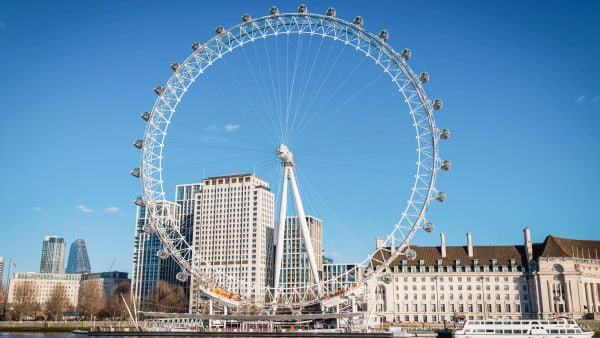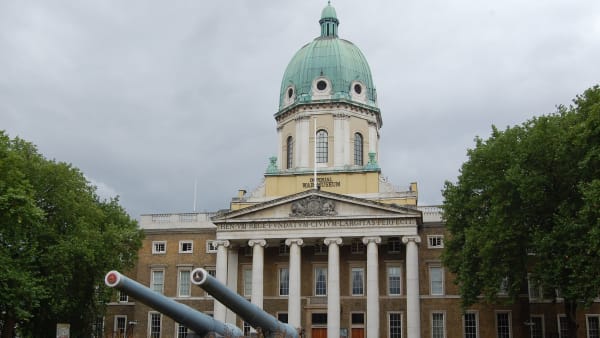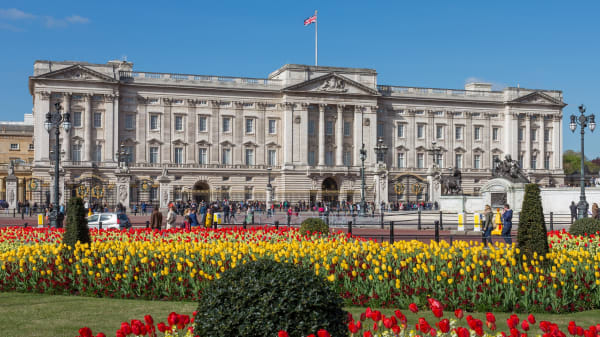Shakespeare’s Globe Theatre
Shakespeare’s Globe Theatre is a recreation of the original 16th-century Globe playhouse, where Shakespeare brought dozens of his works to life
Shakespeare’s Globe Theatre
Shakespeare’s Globe Theatre is a recreation of the original 16th-century Globe playhouse, where Shakespeare brought dozens of his works to life
Shakespeare’s Globe is a reconstruction of the Globe Theatre, an Elizabethan playhouse in which William Shakespeare wrote and had his plays performed. Although other playwrights wrote for the Globe, Shakespeare was certainly the most prominent one and it is to him that the Globe Theatre’s fame is due.

The theatre is still active to this day, with theatrical performances, workshops, community projects, concerts, screenings, family events, and guided tours taking place seasonally.
The playhouse is, unlike modern theatres, a 360° open-air auditorium - a wooden O, as Shakespeare himself called it, with an uncovered central yard. Due to the theatre’s layout, the audience and actors are not separated by physical distance nor by darkness, as everyone shares the same space and lighting. This proximity creates - and it did so in Shakespeare’s time too - a completely different and interactive relationship between the public and the stage, where the audience is as much part of the performance as the actors themselves.
Shakespeare’s Globe history
The original Globe Theatre was initially built in 1599 by the members of the Lord Chamberlain’s Men playing company, for which Shakespeare wrote his plays. It was in this playhouse that Shakespeare wrote the dozens of works that had a huge impact on the arts of theatre and literature, in turn transforming and influencing culture for centuries to come.
In June 1613, the Globe Theatre burnt down during a performance of All is True (today known as Henry VIII). One of the special effects, a theatrical cannon, misfired and ignited the wooden beams, thus causing the destruction of the theatre.
Although the Globe Theatre was built in lumber, this was the only fire it sustained during the course of its existence. The theatre was rebuilt in 1614, but it was closed down not even 30 years later by Parliament ordinance. At the time, Puritan sentiment deemed theatre to be too lascivious, trivial, and incompatible with the strict morality imposed by the conservative mores of its society. The original Globe was thus finally dismantled in 1644-45.
In 1971, American theatre director and actor Sam Wanamaker set up a fund to build the new Globe. This modern reconstruction, which you can see and visit today in London’s Bankside area, took 23 years and the work of hundreds of people to be completed. In 1997, Shakespeare’s Globe Theatre opened just 230 m (750 feet) from the original Globe Theatre site.
Interesting facts about the Globe Theatre
- Special effects: From its early days, the Globe Theatre used special effects to create more dramatic and immersive performances. The occasions that most commonly called for special effects were thunder, lightning, and magic. To create these effects, the company used cannonballs (to mimic the sound of thunder), resin powder thrown into candle flames (for lightning), firecrackers tied to wires (for lightning bolts), and gunpowder mixed with chemicals (to create coloured smoke suggesting magic).
- The name: According to some sources, the name of Shakespeare’s Theatre - The Globe - was a reference to the figure portrayed on the theatre’s flag, Hercules (or Atlas) carrying the world on his shoulders. Whether the mythological character figured on the flag or not, it is for sure that the name drew attention to the playhouse’s circular shape. This shape didn’t reflect classic Roman amphitheatre structures, but rather the circles surrounded by the crowd in which street actors performed at the time.
- The roof: During the construction of the current Shakespeare’s Globe, a special permission request had to be put in to have a thatched roof that imitated the original. This was due to a law prohibiting thatched roofs that has been in place in London since the Great Fire of 1666.
- Colour-coded flags: To signal to the audience what kind of play was programmed for the night, the Globe, like many other theatres in the Elizabethan era, used to display colour-coded flags on its rooftop. Comedies were represented by a white flag, tragedies by a black one, and historical plays by a red one.
- The capacity: Even though the original Globe Theatre could hold up to 3,000 people, nowadays, Shakespeare’s Globe can welcome up to 1,570 people. This difference in capacity is to comply with modern safety regulations.
Location
21 New Globe Walk, Southwark, London SE1 9DT
Shakespeare’s Globe Theatre is located in the Southwark district, right in front of the River Thames, between Millennium Bridge and Southwark Bridge. The area, known as Bankside, is extremely central and full of well-known sights and attractions.
Closest to the Theatre is the Tate Modern, one of the most prominent museums in London. In the opposite direction, east of the Globe, are the Borough Market, The Shard, and The Old Operating Theatre. Just a few hundred metres across Millennium Bridge from Shakespeare’s Theatre you’ll find the biggest church building in London, St. Paul’s Cathedral.
Shakespeare’s Globe Theatre tickets and price
Shakespeare’s Globe Theatre offers a variety of events, although the most common for tourists to attend are performances and guided tours. Play tickets go anywhere from £5.00 to £65.00, depending on the performance, seat chosen, and ticket availability. You can check all running plays on the Globe’s website .
As for guided tours, prices also depend on the kind of event you wish to attend. There are family tours, themed tours, and even demonstrations. You can see all the available tours on the Globe’s website . The most popular kind of tour is, however, the classic “Shakespeare’s Globe Story & Tour”. Adult tickets for this tour of the Globe Theatre cost £25.00, while visitors under the age of 16 get a reduced ticket for £18.00.
Keep in mind that this tour of Shakespeare’s Globe Theatre is included in the London Pass and the 2FOR1 offers. The two grant you free access and two tickets for the price of one respectively.
| Adult |
|---|
| £25.00 |
| Adult | Young visitor (under 16) |
|---|---|
| £25.00 | £18.00 |
Schedule
Shakespeare’s Globe Theatre is open at selected times for tours and performances. Pre-booking is essential to attend these events. You can book both tours and performances on the Globe Theatre’s website or in person at the box office.
The Globe’s box office is open every day of the week from 11:00 am to 6:00 pm. On Saturdays, there’s an early opening at 10:00 am, and on Sundays, the box office closes one hour earlier than usual, at 5:00 pm.
| Day |
|---|
| Mon-Fri |
| Sat |
| Sun |
| Day | Opening time | Closing time |
|---|---|---|
| Mon-Fri | 11:00 am | 6:00 pm |
| Sat | 10:00 am | 6:00 pm |
| Sun | 10:00 am | 5:00 pm |
Transport
If you are taking the Tube, there are two stops almost equally distant from Shakespeare’s Globe Theatre. The slightly closer one is Blackfriars, just across the River Thames from the Globe. Both the Circle and District lines stop there. Along the Jubilee line, southwest of the Theatre, you’ll find Southwark station.
As for buses, lines 4, 40, 63, 344, and 381 all stop in the proximity of the Theatre.
You can find a summary of the public transport options in the table below.
| Method |
|---|
| Lines |
| Stops |
| Method | Underground | Bus |
|---|---|---|
| Lines | Jubilee, Circle, District | 4, 40, 63, 344, 381 |
| Stops | Southwark, Blackfriars | - |
If you want, you can reach the Shakespeare’s Globe Theatre by taxi, but we don’t recommend it, considering the traffic conditions in central London.
Nearby sights
Millennium Bridge - in front of Shakespeare’s Globe.
Tate Modern - right next to the Globe Theatre.
St. Paul’s Cathedral - 800 m (0.5 miles) across the River Thames, 10-minute walk.
Borough Market - 500 m (0.3 miles) east, 6-minute walk.
The Old Operating Theatre - 800 m (0.5 miles) east, 10-minute walk.
The Shard - 1 km (0.6 miles) east, 14-minute walk.
The Monument - 1 km (0.6 miles) northeast, 14-minute walk.
Tower Bridge - 1.7 km (1 mile) east of the theatre, 20-minute walk.














